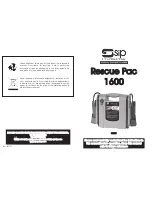
4
Technical Support: +44(0)23 9269 6638 (option 3) PAK200546-CHUBB_02DC Feb 2021
©2021 ELMDENE INTERNATIONAL LTD
Mounting
1)
Site power supply unit allowing minimum clearance – see Fig. 1.0
2)
Ensure that the rear tamper is not in a position that will affect its operation, for example over a mortar
course, recess or raised area on the wall.
3)
Route mains and LV output cables via different knockouts and/or cable entry holes.
4)
Use bushes and cable glands rated to UL94 HB minimum.
Mains Power Up
5)
Attach correctly rated mains cable (minimum 0.5mm
2
[3A], 300/500Vac). Fasten with cable ties.
6)
Apply mains power.
Check for 13.8V on load outputs.
Check green Mains LED is ON.
7)
Disconnect mains power.
Load Output
8)
Loop correctly rated load cable through supplied ferrite (1 turn) and attach to terminal block, note
polarity. Fasten with cable ties.
Fig 2 Position of ferrite
9)
Apply mains power.
Check Green Mains LED is ON.
NOTE:
Red Fault LED may flash to indicate no battery has been connected, this is normal, refer to
diagnostic table on page 7.
Verify load is operating correctly.
10)
Disconnect mains power.
Signalling
11)
Connect EPS, APS and GEN fault outputs to appropriate inputs of control and indicating equipment (CIE).
Standby Battery
12)
Attach supplied battery cables to terminal block and batteries.
NOTE:
ensure correct polarity of battery connections:
+ve
use
Red
lead,
-ve
use
Black
lead.
Position the battery as shown in Figures 3 - 7 below, avoiding the cover earth connection spades and the
cover retaining screws. Fold up ‘Tabs’ to locate battery and secure with the rubber band supplied.


























